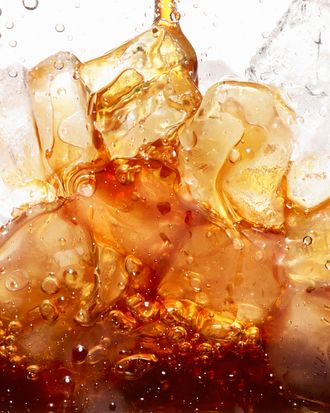
Iced-coffee season is winding down, which is to say, cold-brew season is winding down. In less than a decade, cold-brewed coffee — coffee that is steeped in room-temperature water, usually overnight but sometimes longer — has become America’s go-to option for iced-coffee. Its origins go back much further (maybe to the Netherlands, maybe to Latin America, and maybe to both), and for years it was a New Orleans curiosity before exploding. The technique proliferated among the country’s coffee experts before eventually landing at Starbucks (of course) and Dunkin’ Donuts, giving way to things like draft lattes and “nitro-brewed” tap coffee. It’s in our grocery stores and gas stations. Cold brew has crept into every corner of the coffee-drinking world, and it’s gotten to the point where everyone would benefit from drinking something else.
Cold brew tastes good, but it’s good in a blandly nonspecific kind of way. It’s mellow and gentle and smooth, which are all ways of saying it’s a little unexciting. In technical terms, it actually does contain less of the soluble compounds that make coffee taste like coffee. It also contains less caffeine than hot-brewed coffee. It tastes like softer coffee because it is literally just less coffee. And if it seems like all cold brews taste the same (they do), it may be because what you’re losing are the bits that make different coffees distinct.
Here is how coffee-expert extraordinaire Oliver Strand once described the situation:
Even the haters agree that cold brew is velvety, sweet and has almost no acidity […] that lack of acidity is the problem. Coffee has good acids (e.g., malic, phosphoric) and less-good acids (e.g., acetic, quinic). You want to develop the good acids and minimize the others. In fact, a crisp snap of acid is not only one of the most desirable characteristics of many great coffees, but of many great flavors: strawberries, rieslings, gimlets. The Kenyan, Ethiopian and other African coffees harvested earlier this year that are now making their way onto the shelves are prized for their dazzling acidity. Why ignore what makes them so special?
It appeals to so many people because it’s engineered to be inoffensive. In turn, however, it lacks character. When you add milk, cold brew tends to lose even more of what makes different coffees distinct — the method diminishes coffee’s natural coffee-ness. Cold brew is like Pumpkin Spice Lattes for the third-wave set.
There is nothing wrong with coffee that just tastes like “coffee,” and as a New Englander, I will never say no to a big Styrofoam cup of coffee from Dunkin’ Donuts. And I would never think to tell people not to order coffee however they want. But I also can’t help but think that the continued championing of cold brew as the be-all, end-all of caffeinated refreshment does a disservice to all the other coffees out there that are completely unique and worth seeking out. Yes, the world would be a worse place if everyone became an insufferable coffee nerd, but it will be a more boring place if, when the weather warms back up, we all just blindly reach for the cold brew again without first considering a slightly more adventurous choice.





